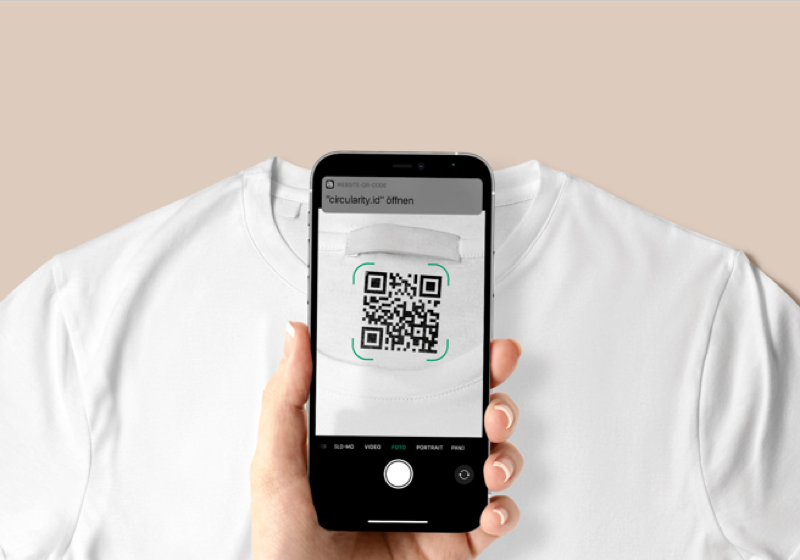Digital product passports: what, how, and why?
Article cited from Circularise blog by Chris Stretton, Growth Marketeer @ Circularise
Digital product passports (DPP) aim to gather data on a product and its supply chain and share it across entire value chains so all actors, including consumers, have a better understanding of the materials and products they use and their embodied environmental impact.
The digital product passports initiative is part of the proposed Ecodesign for Sustainable Products Regulation and one of the key actions under the Circular Economy Action Plan (CEAP). The goal of this initiative is to lay the groundwork for a gradual introduction of a digital product passport in at least three key markets by 2024. These include textiles, construction, industrial and electric vehicle batteries, and at least one other of the key value chains identified in the Circular Economy Action Plan such as consumer electronics, packaging, and food.
Who will need to implement digital product passports?
Battery passports have set precedent for digital product passports, but with other related regulations coming into effect like the proposed Ecodesign for Sustainable Products Regulation, other digital product passport requirements will be rolling out. These will be based on targeted product categories that align with the EU Circular Economy Action Plan.
Textiles, construction, electronic waste, plastics, chemicals, and automotive sectors are all seeing pressures and initiatives to move to more sustainable business practices. Legislation is set to connect across these different product categories as part of the increasing push for digitisation, connected data sets, and assessment of environmental impact across product life cycles.
What information will need to be included in a digital product passport?
- It shall be connected through a data carrier to a unique product identifier.
- The data carrier shall be physically present on the product, its packaging or on documentation accompanying the product.
- The data carrier and the unique product identifier shall comply with standard (‘ISO/IEC’) 15459:2015.
- All information included in the product passport shall be based on open standards, developed with an interoperable format and shall be machine-readable, structured, and searchable.
- The information included in the product passport shall refer to the product model, batch, or item.
For a complete list of the requirements for digital product passports laid out in the proposed Ecodesign for Sustainable Products Regulation, you can download the full proposal here.

The practicalities of digital product passport implementation
From an operational perspective, it’s not as difficult as it may first seem. Once a framework is defined for the information to be included in digital product passports, traceability software can be used to standardise data sets coming from existing ERP systems. The required unique product identifiers can use existing technologies such as barcodes, QR codes, RFID tags, or similar, for digital product passport data submission. In the end, this process can be almost entirely automated.
Bureaucratic burden or growth opportunity?
Implementing digital product passport systems with the required data management process could be a time consuming and costly exercise that can hamper a business. Yet, innovation offers supply chain actors the opportunity to explore new ways to differentiate themselves and grow.
Here’s how you can get the most out of a digital product passport system:
-
Gain a competitive edge
New product offerings that incorporate solid sustainability guarantees backed by data from digital product passports can gain supply chain actors a competitive advantage. Products can then be marketed with trustworthy and quantifiable sustainability claims.
This traceability data will allow value to transcend supply chain tiers and incentivise a network-wide sustainability transition. As with batteries, some products will need to provide product lifetime data, this will also invite innovation and competition on product durability and longevity.
-
Introduce circular business models
This new digital connection throughout the supply chain can also be leveraged to strengthen relationships with downstream customers. A digital product passport can provide the opportunity to explore new business models with retained product ownership, that were not feasible in the past due to disconnected relationships across the value chain, but especially from the end customer to end of life. Designing waste out of systems will also unlock new revenue streams.
The facilitation of more effective end of life processes will unlock the value currently lost in end of life material and waste streams. As business models become more circular, this can also diversify material sourcing options and strengthen supply chain security within businesses.
-
Become a sustainability leader
When end of life processing options must be presented with a product, it will encourage simpler material reuse cases when possible. These tighter loops will offer simple and cost-effective solutions to sustainability challenges and avoid the accumulation of valuable materials in the environment.
Going through the process of digital product passport implementation will also allow manufacturers to better understand their material flows and process efficiencies, to then implement improvements.
-
Use legislation compliance to your advantage
Early compliance with regulation and adopting voluntary certification will also allow companies to capture a greater market share. Establishing an effective method of supply chain impact tracking now will place businesses in a leading position when traceabilityinformation becomes a basic requirement for material procurement.
Images: www.europarl.europa.eu , www.ecotextile.com



